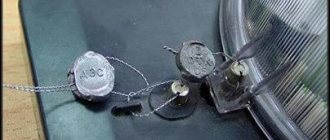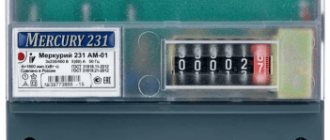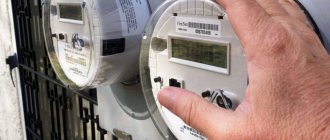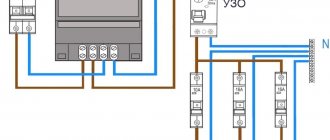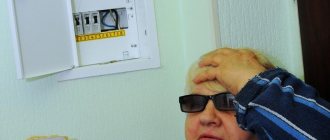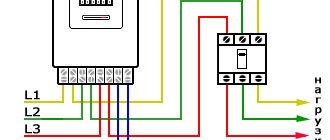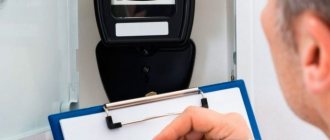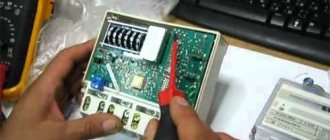Electricity has a high price, and the principle of recording its use is quite primitive. In view of this, many unscrupulous residents who know about the installation principles remove the seal in the hope of saving. For more information on how to seal an electricity meter, how to remove it and what legal consequences there may be, read the article.
Circumstances for sealing
The main reason for installing a seal is to protect against illegal interference with its operation. After all, if the electricity meter in the apartment is not sealed, then residents can easily change its values in order to pay less.
In addition, the electric meter is sealed regardless of its condition. It doesn't matter if it's new or old. The owner of the living space where the installation is carried out is also responsible for its safety in accordance with clause 81 on the rules for the provision of utility services. It also states that the energy meter must be protected from third-party interference, which generally necessitates the use of seals and various indicators.
Answering the question “how to seal an electricity meter?” - no way. This must be done by an authorized person who can record the fact of its installation. There is also no need to pay for sealing the electric meter if this installation is primary. When re-installing, you will have to pay up to 3,000 rubles to seal the electric meter.
Global changes in the energy consumption metering system
First of all, we remove the “confusion” in the interpretations
Yes, you'll have to start with this! When preparing to work on this publication, while reading articles on the topic of electricity meters, the author encountered extremely contradictory information. Moreover, the disagreements were not about trifles or minor nuances, but about fundamental issues. I had to search for the truth, immersing myself in legislative documents that were quite difficult for normal reading.
And of course, there is no “confusion”. It’s just that some confusion regarding the interpretation of the rights and obligations of citizens and organizations involved in organizing electricity consumption accounting is, alas, caused by quite a few unscrupulous authors of articles published on the Internet on this topic.
Expert opinion: Afanasyev E.V.
Chief editor of the Stroyday.ru project. Engineer.
There are no special complaints about those copywriters whose publications were written before 2022. Some have presented the question more talentedly, some have more tongue-tied explanations, others simply “torn” the text almost to the level of plagiarism. But the information, in principle, was appropriately relevant. But those who continued and continue to this day “with a blue eye” to rewrite the same “postulates” after changes in legislation, without bothering to clarify: were there any changes?, and without finding the time to simply raise the original sources - these would-be authors are guilty of complete misinformation of readers and discrediting their Internet sites.
Now let's explain everything.
The main law regulating all legal relations in the field of electricity consumption, accounting and payment for this consumption, delimitation of duties and areas of responsibility and other important issues is the federal law “On Electric Power Industry”.
The main legislative act in the field of electricity consumption is the Federal Law “On Electric Power Industry”.
This act was adopted quite distantly in 2003, received registration number N 35-ФЗ dated March 26, 2003. Over the past almost two decades, various amendments, changes and additions have been repeatedly made to it. This is not surprising - we all witnessed the rapid development of technology at the start of this century. And what seemed relevant and even innovative turned out to be “yesterday” after a couple of years. This especially affected communication systems, transmission and processing of information.
Numerous amendments did not directly seriously affect end consumers, which is why they stopped paying attention to them at the grassroots level. But everything changed seriously with the adoption of Federal Law No. 522-FZ of December 27, 2022, literally called “On amendments to certain legislative acts of the Russian Federation in connection with the development of electrical energy (power) metering systems in the Russian Federation.”
A law that has changed a lot in the relationship between suppliers and final household consumers of electrical energy.
This one act amended four legislative documents:
- In the already mentioned Federal Law of March 26, 2003 N 35-FZ “On Electric Power Industry”.
- In the Housing Code of the Russian Federation.
- In the Town Planning Code of the Russian Federation.
- In the Federal Law of November 23, 2009 N 261-FZ “On energy saving and increasing energy efficiency and on introducing amendments to certain legislative acts of the Russian Federation.”
As is usually practiced, after a certain time, the Decree of the Government of the Russian Federation of June 29, 2020 N 950 “On introducing amendments to certain acts of the Government of the Russian Federation on improving the organization of electricity metering” followed, which already outlined specific practical steps for the implementation of previously introduced amendments to the Law.
The Government, by its Resolution, explains in more detail the mechanism for implementing the requirements of the Federal Law.
The main idea that runs like a “red thread” through these documents is that from July 1, 2022, the widespread transition to intelligent metering systems for electricity consumption will begin, and from 2022 it will reach the calculated mass level.
What kind of “beast” is this, an intelligent electrical energy metering system? We quote the law:
This is “...a set of functionally integrated components and devices intended for remote collection, processing, transmission of readings from electrical energy metering devices, providing information exchange, storage of readings from electrical energy metering devices, remote control of its components, devices and electrical energy metering devices, without affecting the results of measurements performed by electrical energy metering devices, as well as the provision of information on measurement results, data on the quantity and other parameters of electrical energy in accordance with the rules for providing access to the minimum set of functions of intelligent electrical energy (power) metering systems, approved by the Government of the Russian Federation.”
Now that the fundamental difference has become clear, let’s figure out how this will affect us, that is, energy consumers at the household level.
What is changing for citizens - energy consumers
All meters will be “smart”!
Smart meters are nothing new. They had already appeared in small series a dozen years ago, and were even actively used in certain sections of the urban power grids of some Russian megacities - in all likelihood, test tests were carried out in this way. The accumulated experience has made it possible to make plans for a universal transition to such energy consumption metering devices.
Expert opinion: Afanasyev E.V.
Chief editor of the Stroyday.ru project. Engineer.
To tell the truth, such a transition suggests itself - today the “army” of old electric meters looks too varied. From enduring electromechanical devices with a rotating disk to modern ones with liquid crystal displays. Moreover, all this still needs to be multiplied by the huge variety of models. It is no wonder that maintaining order in such an accounting system is very difficult. Perhaps this is why Russia, unfortunately, is among the leaders in electricity losses.
Nonsense - a shield in the entrance on the landing. Four apartments - and four different models of electricity consumption meters!
It was decided to put an end to such “Babylonian pandemonium” once and for all. In accordance with the updated requirements of the Law, starting from July 1, 2022, utility workers are recommended to switch to installing “smart” meters that can work with a smart metering system for energy consumption. This is the first, preparatory stage of the overall reform.
But from January 1, 2022 (very soon!) such an installation will become mandatory.
And then there’s a very important innovation. Previously, purchasing a meter was the responsibility of citizens – energy consumers. Now this is the exclusive prerogative of the organization involved in energy supply.
What is a “smart” meter?
One of the modern models that fits the definition of “smart meter”
This is a metering device, which, according to the plan, should save the user from many intermediate operations of reading and transmitting information to the energy supply company. The device takes care of all the calculations, taking into account possible benefits for the consumer and multiple tariffs, informs the user of the amount to be paid, and informs the supplying organization of the exact amount of energy consumed. Moreover, this data can be detailed by time, by the quality of the supplied energy (strong drops or, conversely, power surges), which, according to the plan, should make it easier to resolve disagreements when they arise.
Diagram of the relationship between a smart meter and the energy supplier company and the consumer.
It is planned to actively use Internet protocols to transfer information, especially in terms of wireless communication (Wi-Fi) from the meter to the router, and then to the general network. Duplication of channels via GSM or innovative LPWAN systems is possible. The user must gain access to detailed information (in addition to visually directly on the meter) through a mobile application. It is expected that this application will be able to analyze consumption, compare it with previous periods, present information in an easily digestible graphical form, which will help streamline energy costs and provide tangible savings.
What else should such a “smart” meter be able to do?
- Such a device is capable of conducting diagnostics of the network it serves and self-diagnosis, and reporting to the “center” and its consumer about identified problems.
- Independently switch to the currently valid temporary electricity payment tariffs.
- Immediately report to the control room about an accident, an attempt at unauthorized opening, illegal connections and other similar information.
- Notify users about accumulated debts for payment of consumed energy.
- Store accumulated information in built-in non-volatile memory.
It must be said that the experience of using such smart meters shows that they fit perfectly into the concept of a “smart home”, and are indeed capable of achieving considerable cost savings, stimulating careful use of energy.
Who will install such meters and when? At whose expense?
Let us immediately reassure readers - you should not expect any kind of emergency. Judging by the changes made to the laws, the replacement of old electricity consumption meters with new ones will be carried out gradually.
Namely, from January 1, 2022, they will, at least initially, be installed only to replace old ones that have failed, have reached their service life limits or the current calibration interval. In the latter case, the metering device will no longer be sent for the next verification, but will simply be taken out of service.
Of course, the replacement will be accompanied by some kind of well-established procedure for putting the new system into operation with user instructions and testing of communication channels.
It is clear that in new buildings new “smart” meters will be installed immediately by default. At the same time, no distinction is made whether these are multi-apartment houses, mass urban development, or suburban, private ones, in cities, towns, or villages. Only the company responsible for the installation changes.
Thus, the entire installation of meters for smart metering systems for electricity consumption in urban multi-storey buildings is entrusted to the guaranteeing supplier. In the private sector, the local electricity network (grid company) will be responsible for this.
Now let’s ask ourselves the question: “at whose expense is the banquet?” Alas, there is nothing particularly to be happy about.
Yes, the amendments say that the responsibilities for purchasing and installing equipment are assigned to the energy supply organizations mentioned in the previous paragraph. That is, the consumer will not need to search, select and purchase a metering device for his own money.
The installation of smart meters will be carried out by energy supply companies or organizations. However, there is not a penny of altruism here - they will win back everything through an increase in electricity tariffs.
But the legislation very clearly states that energy supply organizations have the right to compensate for the costs of these activities when setting electricity tariffs. Literally speaking, the costs will be included in the sales premium of the guaranteeing supplier or network company. So we will still have to pay, “in installments,” and it remains to be seen what would be more profitable. Even if the company receives a full refund from a specific consumer, it is unlikely that this will be accompanied by a reduction in his “individual tariff”.
Division of responsibility for installed metering devices
The device will be supplied and put into operation “free of charge” (see above). Who will be responsible for this expensive equipment during operation? All this is also stipulated in the updated legislative documents.
There are no particular difficulties in understanding the boundaries of responsibility:
- Owners of apartments and non-residential premises in apartment buildings are obliged to ensure the safety and integrity of smart meters, including all seals installed on them and other visual control signs, as well as other equipment included in the smart metering system located on their property. They are also responsible to the companies that install the equipment for losses caused by dishonest attitude towards fulfilling these duties. Similar duties and level of responsibility apply to owners of private sector houses if the equipment is located within their territory (the house itself or an allotted plot of land, for example, in a cabinet on a pole behind a fence on the property).
- In all other cases, including if the “smart” meter is located in a common panel on the floor area, or in a cabinet on a pole, but outside the legal territory of a private household, both the duty to preserve and the responsibility are either in full or on the guaranteeing supplier (high-rise buildings) , or on local power grids (private sector).
Homeowners who are responsible for metering devices do not have any rights to independently remove or reinstall metering devices, no matter what their reasons. They are prohibited from denying access to employees of responsible companies, interfering with the communication system (data transmission), interfering or completely impeding the necessary repair, maintenance and adjustment work.
Advantages and disadvantages of innovations in electricity consumption metering
What are the pros and cons (or not entirely clear questions) of the transition to intelligent metering of electrical energy consumption:
pros
- There is no need to independently take meter readings to transfer them to the energy supply company for calculations and charging. All this happens automatically.
- On the part of the energy supplier, a fairly impressive staff of inspectors who make daily rounds of individual consumers on certain current issues becomes unnecessary.
- The possibility of electricity theft is sharply reduced - the system is designed to respond to such attempts.
- Makes day-to-day monitoring of energy consumption and receipt of payment easier. The energy supply company gains the ability to remotely respond to systematic payment delays by shutting off or limiting supply.
- “Smart” meters fit perfectly into the system of flexible tariffs by day zones and individual consumer benefits.
- Detailed information is stored in the memory of the device and system, and can be requested to resolve conflict situations.
- As the developers assure, new “smart” meters are becoming a universal platform for data transmission systems for all utility costs - except for electricity, gas and water consumption meters, and possibly also heat, can be connected to them via wired or wireless communication lines for data transmission . That would probably be really convenient.
- Such systems should involuntarily encourage consumers to be as careful as possible with the supplied utility resources.
Minuses
- The equipment is very expensive. And although the consumer will not have to pay for it at once, financial losses are still inevitable in the end.
- It is not entirely clear how such expensive and delicate equipment will be stored in the common panels of the entrances of apartment buildings. Not all houses in the country have security guards, concierges and surveillance cameras.
- Electronics of this class require stable power to operate correctly, and in many regions, especially in suburban areas, power outages are almost a rule.
- Similarly, the availability, stability and capacity of local lines and Internet communication networks raise a lot of questions.
- It is possible that the performance of such systems will be strongly dependent on hacker “pampering” or even full-fledged targeted attacks.
- It is not yet clear where to get such a number of trained personnel if the installation must be carried out everywhere throughout the country, regardless of the region and the status of the settlement.
- Tests conducted in a number of countries have shown the vulnerability of systems in terms of leakage of personal data of consumers. Of course, they are actively working on the identified “failures,” but anxiety still remains.
It must be assumed that not everything will go completely smoothly, but in general such a transfer is still necessary and it will certainly take place. Soon, an intelligent consumption metering system will become commonplace, as now, for example, IP television is perceived, which until recently was considered almost science fiction.
Law's point of view
However, the regulatory regulation on sealing electric meters does not end there, because there are several other laws that are related to it. Of the most important, it is worth highlighting the following:
- The tenant's obligation to provide the entire premises with all electricity meters and devices. If there are none or they are broken, replace them.
- The meter should be launched less than a month after its installation.
- Tampering with seals: filming, breaking or tearing is prohibited.
- All seals must be appropriately marked by the organization that installed them.
If the seal is removed or broken, then all transmitted readings are a priori considered incorrect. This entails legal consequences for the apartment owner. What is the fine: up to 300,000 rubles. — individuals; up to 500,000 - legal. The payment deadline varies from person to person.
Which persons can legally place a filling?
Officially, only people who are employees of the energy company that supplies electricity to the house are authorized to seal the electricity meter. Anyone who seals electricity meters in apartments always has an employee ID of their company. You can find out the name of the supplier from the housing company or look at the name of the organization that sends electricity bills.
Contacting a network organization can be done in all ways available to them, which often include either calling directly to submit an application, or filing it through email or government services. Therefore, there is no point in thinking about how to seal all the electricity meters in a building or apartment, because the procedure is identical everywhere and is performed by another person.
Electric meter fault detection
Of course, if your meter is burnt out or hit by something, then it is not difficult to notice such damage, but there are other breakdowns that can cause you harm.
A timely application will allow you to avoid troubles Source tokidet.ru
As a rule, when there is no deformation, blackness from smoke or mechanical damage to the housing, the only thing that is immediately noticed is the number of kilowatts, which for some reason has increased sharply compared to previous readings. If you have such suspicions, then you can arrange a small test that will either confirm or refute your fears.
Disconnect absolutely all current collectors in your house or apartment, including charging your phone or tablet. To make sure that no appliance is consuming electricity, use an indicator screwdriver. Insert the tip first into one and then into the other socket of the socket: if the light bulb lights up in both there and there, it means that something else is connected and at zero in a closed circuit you see a reaction to the voltage. If everything is turned off, the indicator will only work when it comes into contact with a phase wire.
Now look at the readings on the meter, including the red numbers - record them on paper so as not to forget. Take any light bulb that indicates its power - this indicator will serve as a starting point for checking. Start a stopwatch on some gadget and connect the lighting device to the network for exactly 10 minutes. Let’s say the light bulb power is 40 W (lighting fixtures indicate the consumption of watts per hour), which means that in 10 minutes the readings should be 60/40*10=15 W. That is, in ten minutes the numbers on the display should increase by 15 watts, but taking into account that the power on household appliances does not always correspond to reality, we can assume that they will increase by 16, or in extreme cases, by 17 watts. But if they increase by 50 or even 100 W, then you need to urgently sound the alarm - you are paying for non-existent electricity consumption.
Types of fillings
If we talk about the classification of fillings, there are only two of them:
- Standard. These include those seals on the electric meter that were installed from the factory by the manufacturer. The forms in which they are placed can be completely different, but often these are holographic stickers. It is the presence of the factory seal that will indicate that the device has passed all tests and is completely ready for use. The warranty period is also determined by the manufacturer, but if the seal is broken, you will not be able to get it.
- Custom. These include those installed by the energy company. This is not done to confirm the proper operation of the device, but to measure electricity consumption and prevent interference with operation.
When it comes to species, the list is much wider. It includes:
- Lead. The most popular type, as it is easy to install and detect whether the seal has been broken or not. This “advantage” is due to the fact that when it is opened, the latch immediately breaks and it is impossible to restore it without the appropriate skills and equipment.
- Plastic. They are often numbered: each seal is assigned an identifier. Thanks to it, it can be tracked in which apartment it was installed. If you try to open it, like a lead one, the latch will be broken, which will actually record the fact of a break-in attempt.
- Clamp. The most rare, but still used method. In essence, it is an ordinary plastic tie that is inserted into a special bracket and can only move in one direction. “Protection” against opening, since it is easy to remove, is provided by the presence of a unique number on it. It is almost impossible to apply it at home, so this partly reduces the number of scams involving it.
- Rotary. They are made of plastic, and the principle of operation is as follows: the fishing line is threaded into the holes, holding the sign, until a certain click is heard. Trying to remove it results in damage.
- Stickers. The simplest, but no less effective method. If you open the sticker, you will not be able to replace it with an identical one. However, it is highly dependent on external factors, which poses the risk of damage.
- Antimagnetic. They are also used and are relevant exclusively for disk counters, since the essence of their work is to prevent the action of a magnet on the disk. The impact is made in order to slow down the disk, thereby “reducing” consumption.
It is recommended to always call a specialist from the energy company, as he will definitely be able to select the necessary one. If he doesn't do this, that's also okay because the legal consequences can be avoided.
However, how many fillings are needed? There should be only one seal per meter.
A few final words
No one, except completely stubborn retrogrades, doubts the need to switch to digital technologies in matters of public utilities. Another thing is how will all this be implemented in practice?
Of course, in the process of implementing this megaproject, the implementers will face a lot of not only difficulties, but even problems that are practically unsolvable at first glance. And of course, it would be great if they manage to overcome all this - then perhaps the Internet will really reach every corner of our huge country. Without this, an intelligent system will not become such...
Reviews are already appearing - both from those who have already encountered the use of “smart” meters, and from those who are in “sweet anticipation” of this. Unfortunately, we have to admit that negativity still dominates among the opinions expressed. The predominant complaints are about the still low reliability of the system, about clearly inflated energy consumption figures, and about the significant rise in price of services. And those waiting their turn for installation sigh that they never expected anything good from power engineers and do not expect that everything will result in another wave of tariff increases - there is enough motivation for this. Positive comments and reviews against the general background are rare.
We can only hope that the reform will not be so scary, that intelligent systems will truly become assistants to consumers and work for their benefit. And then the polarity of the reviews will change to the opposite.
In conclusion, there is a video that reveals a little more broadly the capabilities of intelligent electricity metering systems.
How to remove the seal from the meter
So, let's look at the procedure for removing the seal. Answering the question “Do I need to pay for violating the safety of the seal?” - Yes need. They do not require anything for sealing. The fine for breaking a seal ranges from up to 300,000 rubles. In addition, if during the accounting it turns out that too much energy was spent, then you may be sued. As a punishment, you will have to pay for the estimated amount of all energy used and legal costs.
If we talk about unsealing the electric meter, then first of all you need to take into account the differences in the models, because there is no other way to understand how to do it correctly. Not every filling can be removed, and therefore we will use only proven options:
- Lead. This is a method on how to remove the seal from a lead type electric meter. Please note that this must be done carefully, without damaging the applied designation. Subsequently, it will not be possible to add it manually, because it is done using a sealer. Procedure:
- We take any wire to make two small hooks from it.
- We put hooks in them.
- Place small rubber plates to protect against damage, and place coins on top on both sides.
- We clamp the washer with pliers.
- We tighten the wires. When you return the seal back, you will need to squeeze it a little.
We expand the hole of the seal with any convenient tool: a needle is best.
If something was damaged during the process, there is no need to put back the fake under the guise of the original. The law establishes a fine for breaking a seal.
- Peel off the plastic strip from the protection.
We make hooks as for a lead seal, and in exactly the same way: we apply rubber plates, put coins and clamp the washer with pliers, pulling the wires together in parallel.
If you find a slight play that appears when installed incorrectly, this will only work to your advantage.
What to do if it doesn’t work out: it is recommended to immediately take a photo and contact the energy supply company. The photo should show how many values are “wound” on the meter, which will eliminate the payment of a fine. There is no need to try to carefully put the seal in place. There is a high chance of ruining it so that everything will look as if there was an attempt to change the values in the installed electric meter.
Legal consequences
Will there be anything for withdrawal? Will. After re-registration, a fine for missing a seal may be up to 300,000 rubles, but the court may also require payment of all legal costs for the company and an approximate bill for the energy used. The period for such payments is also limited, and if it is not met, the apartment may be cut off from power.
If the violation is carried out by a legal entity, the fine for interfering with the operation of the device will be up to 500,000 rubles, the period for payment of which will directly depend on the lawyers and the volume of stolen energy. By the way, the cost of the initial sealing is zero and the installation period after filing an application is less than a week, which is many times more profitable than fraud.
Breaking any type of seal on an electric meter is an offense and you need to be prepared to bear the corresponding legal consequences when removing them. However, this knowledge will make it possible to understand when the seal is broken or installed incorrectly. This will have the opposite effect, since a timely appeal will be drawn up, which in the future will free you from high legal costs.
Instructions for sealing an electric meter
Common people rarely face the issue of sealing an electricity meter, so questions often arise: how to do it correctly? Let's look at each stage in more detail to have a complete understanding of all the nuances.
Contact the energy network and submit an application
We have already found out that only a specialist from an energy sales company can put a seal. Accordingly, you need to contact the nearest branch. This must be done after installing the device, but no later than 30 days after installation.
When visiting an energy supplier, you must submit an application for sealing of the electric meter, which should indicate:
- Personal information about the owner of the property.
- Address of the location of the object.
- Contact information.
- Subscriber's personal account number.
- Name of the metering device.
- Reason for installation: primary, replacement, transfer or due to faulty wiring.
The application form can be obtained from the energy supply company or you can create it yourself.
Personally visit Energosbyt
After completing the application for sealing, the specialist will issue a receipt for payment for services, if the procedure is a paid one. After making the payment, you must return to the energy sales company and provide a copy of the payment document. Only after this the application will be accepted for processing.
If possible, the time of arrival of specialists is agreed upon
As soon as you have submitted an application and paid for sealing services, you can agree with your electricity supplier on the day and time of the technician’s arrival. If at the moment the specialist cannot give an exact date, then ask to call the contacts specified in the application.
Procedure
To seal the electric meter correctly, you need to contact the sales company or network organization. Call the site manager of your RES (electrical network district) and agree on the time and cost of services. Write an application for sealing to the responsible person.
Problems that may arise
If the seal becomes unsealed due to an accident, transfer or other impact on the seal, the consumer has 2 months to correct the problem. During this time, electricity is paid according to standard values. If the meter has been unsealed for more than 2 months, the calculation for the 3rd month will be based on power. The power allocated to the power facility will be multiplied by the number of days without sealing, as well as by 24 hours.
If the inspection authorities reveal violations of the seal, and the last inspection was carried out more than 3 months ago, this threatens serious financial losses. Referring to Russian Government Decree No. 442, the company will present you with unaccounted consumption of electrical energy, which will be calculated based on maximum power.
For example. Your power is 15 kW, the calculation period depends on the number of days from the last inspection report until the integrity of the seal is broken. The bill for unaccounted energy consumption will be calculated using the formula: 15 kW*number of days*24 hours. The maximum number of days that you can be presented with as unaccounted for energy consumption is 365 days!
In a controversial situation, when the seal is not broken, but the meter shows incorrect data, do not sign acts of unaccounted consumption. No matter how much they put pressure on you or persuade you! If the meter has been sealed and accepted into operation by the service provider, you are not obligated to pay money for a faulty device . Now it's the electricity supplier's problem. If they have suspicions about you, they are required to provide the results of a factory examination, which will prove that the subscriber influenced the operation of the electric meter. Without direct evidence, without your signature, the case will not go to court.
Classifications of fillings
There are several types of seals on meters:
- Primary - set by the manufacturer, has a certain validity period, which is indicated in the instructions and passport (4, 6, 8, 16 years).
- Repeated – security seal of the service provider who recognized the electric meter as accepted for operation.
- Factory ones.
- Service provider seals.
The work is carried out as planned (verification period has expired) or unscheduled: breakdown, suspicion of unaccounted energy consumption, meter relocation.
There are seals on the protection device, but do not confuse them - they do not affect the authenticity of the electricity readings.
